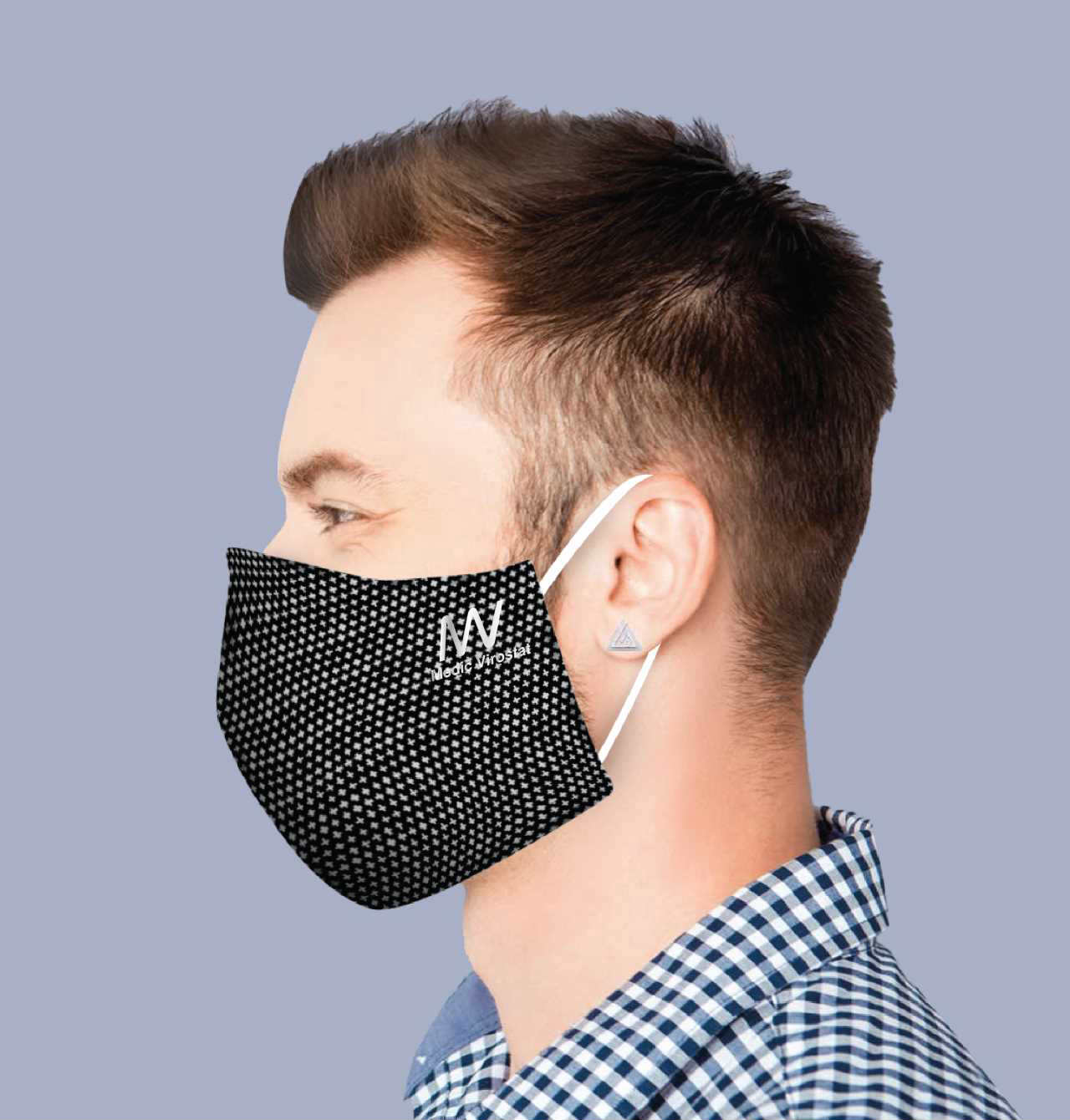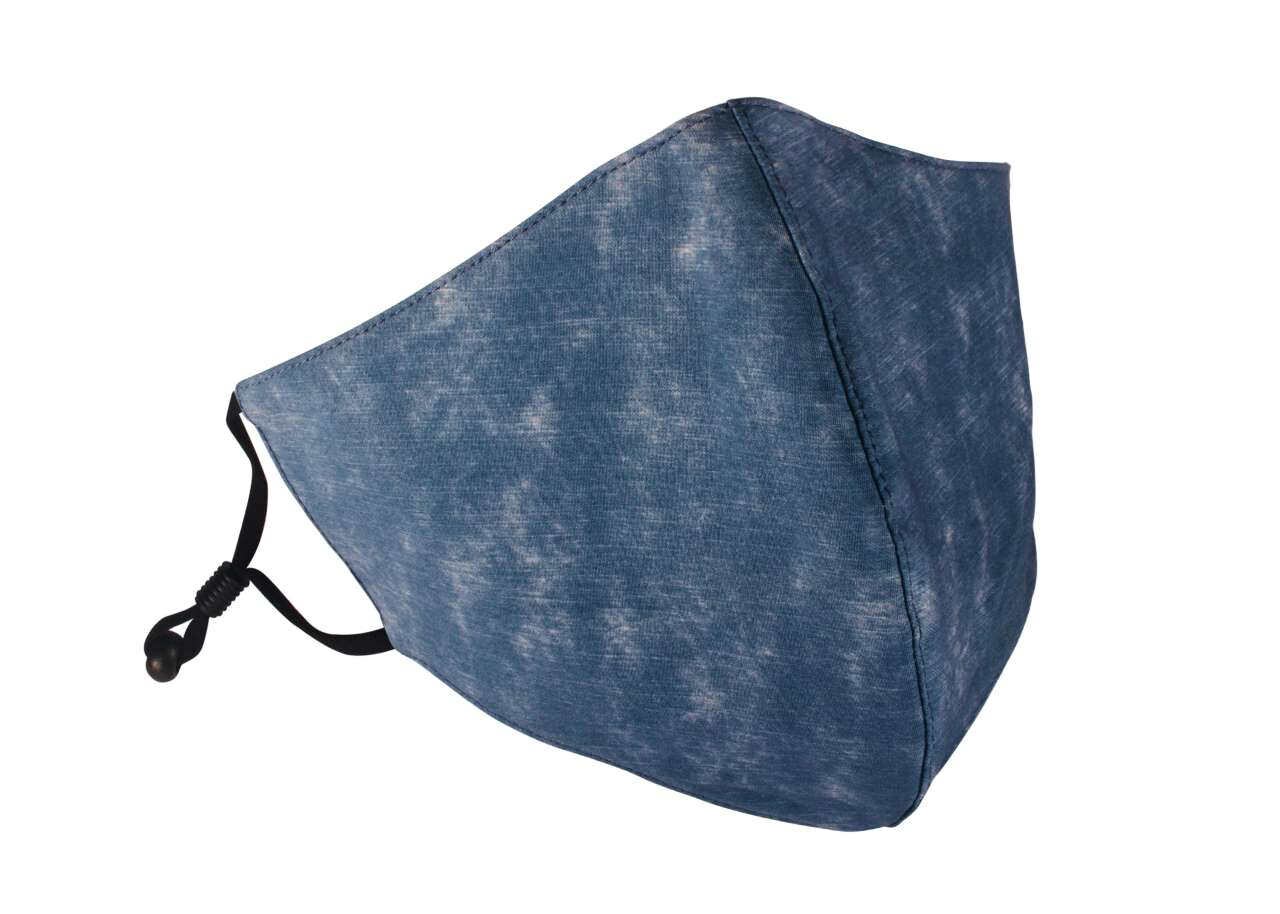
[ad_1]
They’re everywhere now thanks to COVID-19 — the protective mask. They come in the highest grade possible, like the N95 mask, which act as a near-foolproof barrier against the novel coronavirus, while the humbler ones are a makeshift handkerchief strung around the wearer’s nose and mouth. However, at the basic level, a mask is nothing but fabric that attempts to prevent the novel coronavirus from entering one’s respiratory body through nasal and oral cavities. However, that simplicity in function could soon change.
A handful of textile companies have started waking up to the need of not just preventing transmission of viral particles to the wearer of a mask, but also destroying the virus in question that would otherwise remain on its surface. The one common link that connects the products of these manufacturers is a Swiss technology called HeiQ Viroblock applied generously in all these anti-viral masks.
Anti-viral masks versus regular masks
“Normally a mask or a PPE cover-all are merely barriers that don’t let the viruses inside,” explains K S Sundararaman, Managing Director of Coimbatore-based Shiva Texyarn, “Anti-viral technology, though, kills these viruses that settle on the surface of this barrier.”
One of the textile companies to have adopted HeiQ technology, Shiva Texyarn launched its anti-viral masks exactly a month ago. By the time July was done, the Coimbatore textile company sold a whopping 20 lakh pieces. “What we made was a washable mask for just 49 rupees,” says Sundararaman. But its three-layered mask isn’t as simple.
While the HeiQ Viroblock technology attempts to deactivate the viruses that settle on the surface of the mask, another layer of N-95 melt-blown fabric ensures the mask stays washable. “We’ve used a technique that ensures the virus doesn’t penetrate the first layer of the mask,” says Sundararaman. The mask’s third layer is untreated cotton.

Shiva Texyarn’s masks come with an N95 melt-blown fabric to ensure that they stay washable. (Image: CNBC-TV18)
How does HeiQ work?
In a nutshell, HeiQ destroys viral particles left behind on the surface of the fabric its technology is used in. “In other words, it is constantly self-sanitizing and breaking these viral particles down,” says Bharat Subramaniam, Director, Emcee Apparels that is part of the Defend and Protecht initiative, a coming-together of three textile companies using HeiQ Viroblock technology to make anti-viral masks.
“When a virus gets attracted onto a silver ion, which is fused to a bio-based lipsome layer, the silver ion destroys the outer layer (protein coat) of the virus,” Bharat explains, “Once this outer layer is destroyed, the viral RNA is released, which now cannot exist outside a host or the protein coat.”
In layman terms, the silver ions and the bio-based liposome layer make the foundation of HeiQ Viroblock, which is the bedrock of the anti-viral technology that these masks come with. The silver ions attract viral particles and use simple osmosis to destroy their protein coats. “The surface of the mask has a coating of silver ions and vesicle booster to speed up the process,” Bharat says.

Defend and Protecht’s mask uses four applications of HeiQ technology in just one mask. (Image: CNBC-TV18)
Mask sales in top gear
Defend and Protecht, Shiva Texyarn, Arvind Ltd and Loyal Textile Mills are some of the textile majors using HeiQ viroblock to equip otherwise basic washable cloth masks. In less than a month since Defend and Protecht launched its top-line of anti-viral masks, priced at Rs 250 per piece, it sold nearly 6,000 pieces. The company is also launching a new Essentials line, priced at between Rs 30 and Rs 60 per mask.
The company’s manufacturing footprint, in Chennai, has a capacity of 20,000 pieces per day but only makes around 5,000 to 10,000 masks every day. “We can scale up to 75,000 masks, per day with ease,” says Bharat, “In fact, the machines that we’ve allotted to manufacture these masks ensure a capacity of 100,000 pieces per day.” This isn’t surprising especially given that the textile manufacturers that are part of Defend and Protecht — Emcee Apparels, Sreekumar Texind Corporation and Dvintex are capable of making an excess of a million shirts every month.
Shiva Texyarn is targeting a sales target of 10 lakh masks this month, in the domestic market alone. “We don’t foresee the need to scale up further until the export ban is lifted,” says Sundararaman, “There is a lot of interest from countries as far as Brazil because of our high-level of protection and our competitive price point.” While the company’s basic product is priced at a very competitive Rs 49, more fancily designed variants are priced at Rs 70.
Value-additions to anti-viral masks
For a relatively steeper price of Rs 250 per piece, Defend and Protecht’s top-line of anti-viral masks come with some nifty value-additions. In addition to the HeiQ Viroblock technology that exists in all of its masks, HeiQ Pure controls odour that is emanated thanks to bacterial breakdown of sweat, which is fairly common while wearing mask.
Additional HeiQ technology like ‘Smart Temp’ also helps with thermoregulation, which controls of heat build-up within Defend and Protecht’s mask. Loyal Textiles, on its part, has launched Triple Viral Shield equipped reusable masks and PPE equipment, also using HeiQ technology.
[ad_2]
Source link